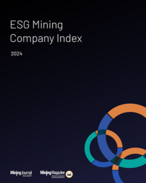The rising value of the US dollar, driven by a strong economic recovery and the promise of higher interest rates in that country, has triggered unexpected events across the resources world.
Coal has obviously been hit by more than changing currency values. Oversupply is an equally big issue, as is a slowdown in demand by heavy users of the fuel, such as China.
Until recently the impact of currency adjustments has been overlooked but a series of events has sharpened The Hog’ interest in a trend that has taken some of the smartest investment bankers in the world by surprise.
Among the developments which put the rising US dollar in the frame as a cause of widespread falls in commodity prices is the time factor connecting the price moves with platinum, coal, iron ore and wheat all slumping to five-year lows in the same week.
In each case a number of “commodity-specific” issues have been mentioned.
Wheat prices, for example, have been hit by a bumper corn harvest in North America.
Oil is also a story of oversupply, while platinum has been set back by concern over a boom in vehicle sales hitting a peak, which could cut the demand for auto-exhaust catalysts.
Coal also has its particular problems, most of which do not need repeating and boil down to a simple case of excess supply hitting the market from the mine-development rush during the China-driven resources boom that was supposed to be “stronger for longer” – but isn’t.
Last week saw a mix of indicators that the coal-price slump is close to the bottom, with spokesmen for the world’s biggest coal trader, Glencore, pointing to continued strong demand growth of about 5% a year.
If that forecast is correct and mine closures are doing their work by limiting future supply, then a re-balancing of the market should take hold over the next six-to-12 months as surplus stocks are consumed.
But sitting above the price movements in coal and other commodities is the remarkable effect of the rising value of the US dollar against almost everything else.
What seems to be happening – and The Hog is waiting for an academic explanation – is that institutional investors are reorganising their portfolios by shifting large amounts of the funds they have under management out of the commodity sector into US dollars.
In time, when the US dollar peaks, those funds will come back into commodities and other assets classes but that’s unlikely to be until sometime next year.
An example of what’s happening is the retreat of US investors from the Australian mining sector, a process which is as much about Australia’s high internal costs as a rush to repatriate funds back to the US.
Quitting Australia today and stocking up on US dollars for tomorrow makes perfect sense if those US dollars are going to buy more in the future – which they will.
The problem for everyone exposed to coal and other commodities is that there’s not much they can do except wait for currency values to find their new level, and that’s a process being controlled by an expected upward move in US interest rates for the first time since the 2008 global financial crisis.
It is the flood of funds into US dollars ahead of the rate rise, as much as the oversupply of certain commodities, which has played a critical role in destabilising markets.
A recent survey by the Bloomberg news service listed three reasons for what might be called the commodity crunch – surplus production, slowing growth in China and the “surging dollar”
One respondent to the survey noted: “There are no supply constraints and global growth might not be where it’s expected to be and over all that there is the strong US dollar.”
A better understanding of what’s happening in commodities is cold comfort to everyone exposed, with the only good news being that in time the currency fad will pass and investors will rebalance their portfolios and return to commodities.























